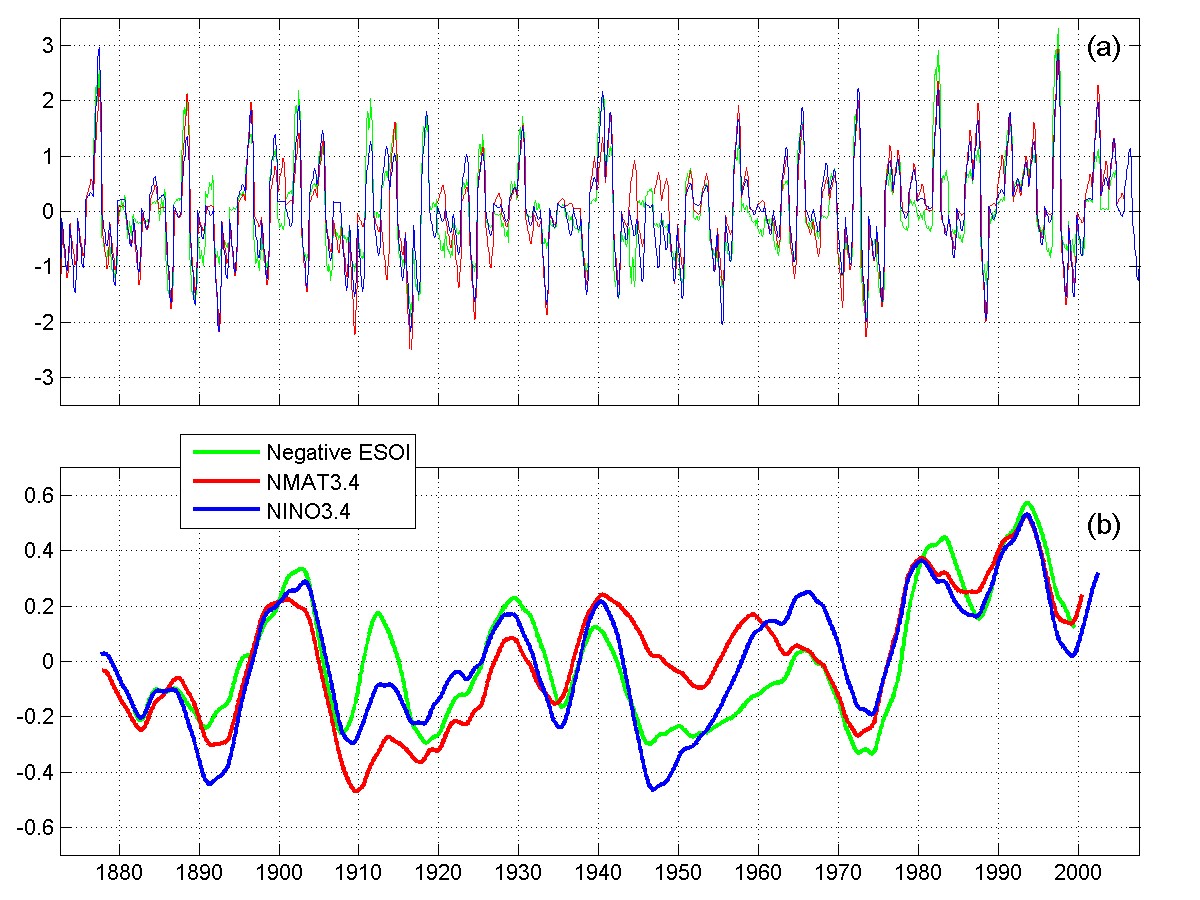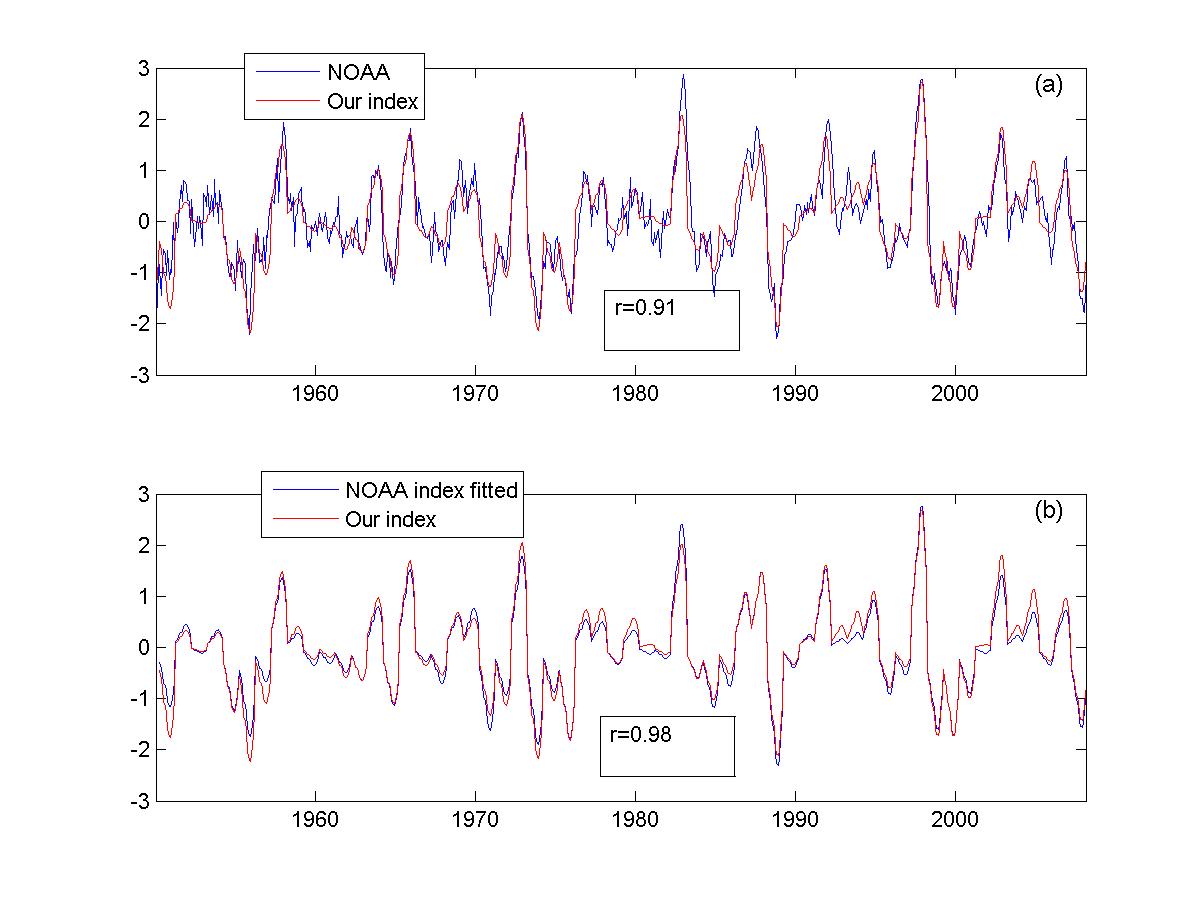The monthly El Niño Southern Oscillation (ENSO) indices below were independently constructed and, as one should expect from physical arguments (Bunge and Clarke, 2009), are highly correlated (Figure 1a). They also are highly correlated on decadal and longer time scales when the high amplitude ENSO signal is removed by low-pass filtering (Figure 1b).

1. NINO3.4: Sea surface temperature averaged over the box bounded by 5°N, 5°S, 170°W and 120°W (Time series starts January 1873 and end in March 2008).
2. NMAT3.4: Night time marine air temperature averaged over the box bounded by 5°N, 5°S, 170°W and 120°W. (Time series starts January 1873 and end in March 2008).
3. ESOI: Equatorial Southern Oscillation Index. (Time series starts January 1877 and end in March 2008).
How to extend our index NINO3.4?
Figure 2a
shows the NOAA and our NINO3.4 indices. The
correlation between the indices is r=0.91. The largest differences are
due to
the fitting of the year-structure [see Bunge and Clarke (2009) for an
explanation of the "year-structure"]. Indeed, if we fit the same year
structure
fitted to our index to the NOAA index, the correlation between the
indices
increases to r=0.98 (Fig. 2b).

Our
analysis was very useful in verifying that our
NINO3.4 index was accurate before 1980, when data were less plentiful. In particular, fitting the year-structure was helpful for filling gaps
in the monthly series when data were scarce. But
there is no point in using our analysis in more recent times when data are
adequate. Therefore, if you need an up to date version of the NINO3.4 index, we suggest
that you use this version of our index extending from January 1873 to December 1979, and
from January 1980 to the present use the monthly NOAA NINO3.4 time
series found at the website
http://www.cpc.ncep.noaa.gov/data/indices/sstoi.indices
The data are in MatLab format. Each file contains the index for the corresponding month and year. If you need them in another
format or if you have any problem, contact Lucia Bunge (lbunge@fsu.edu).
For more information on these indices, please read: Bunge,
L., and A.J. Clarke, 2009: A verified estimation of the El Niño index NINO3.4 since 1877. J. Climate, 22, (14), 3976-3992.
If you decide to use these indices, please acknowledge the manuscript above.


